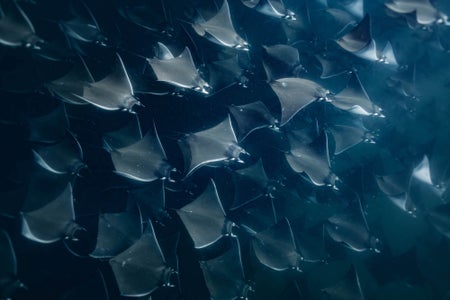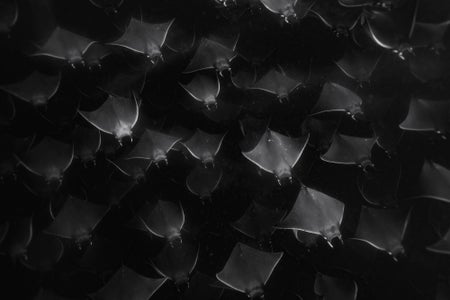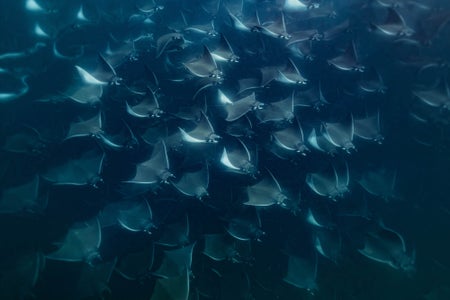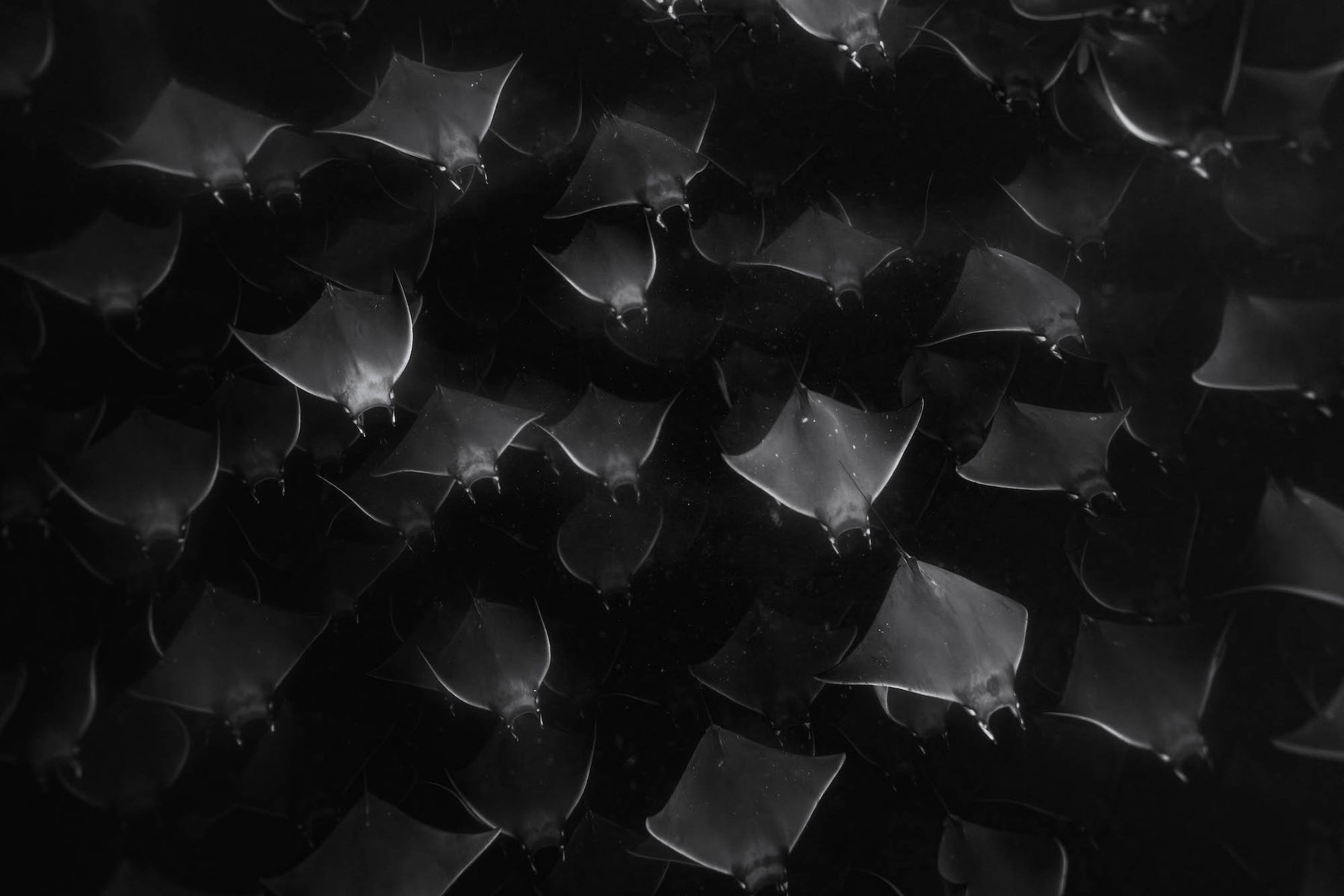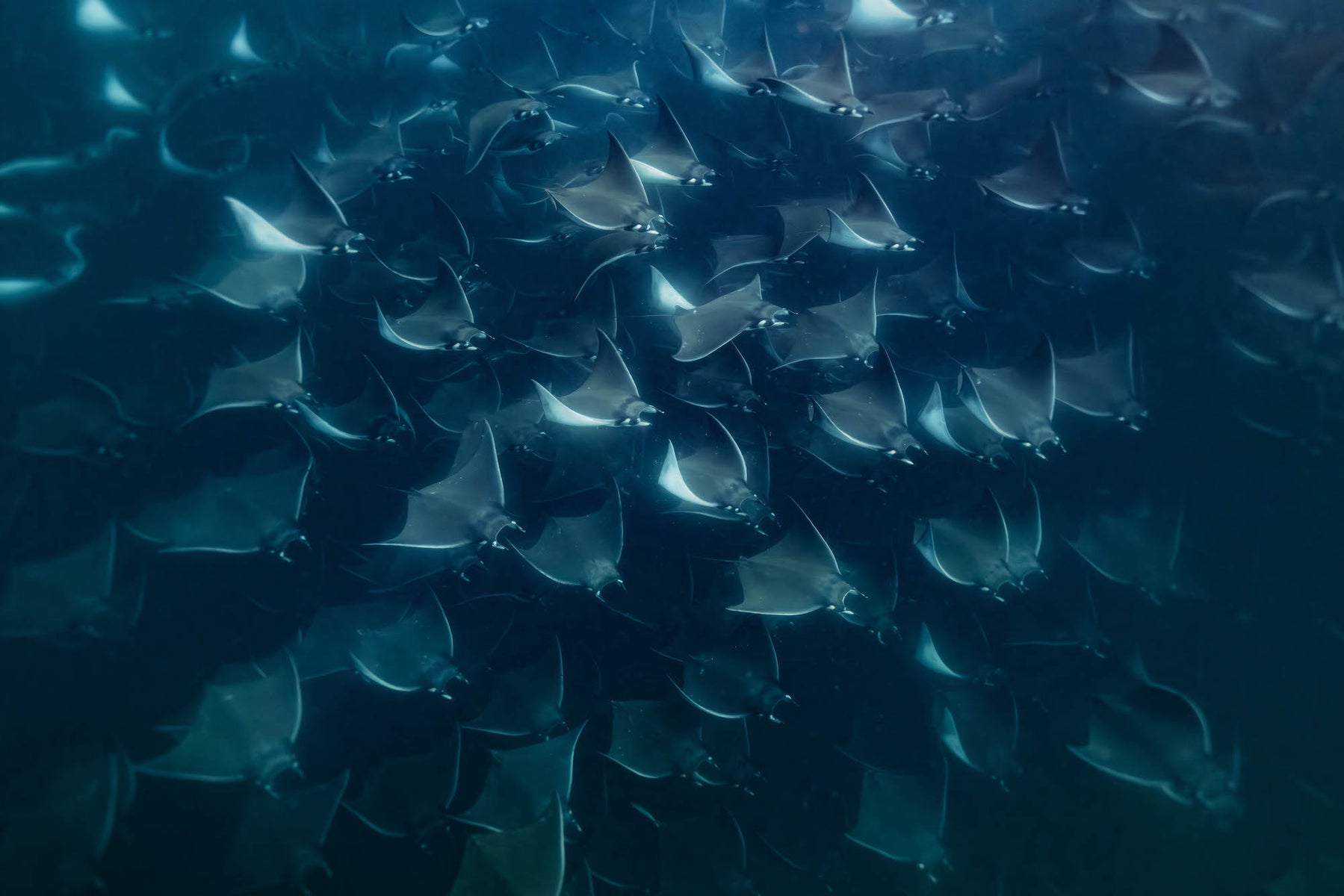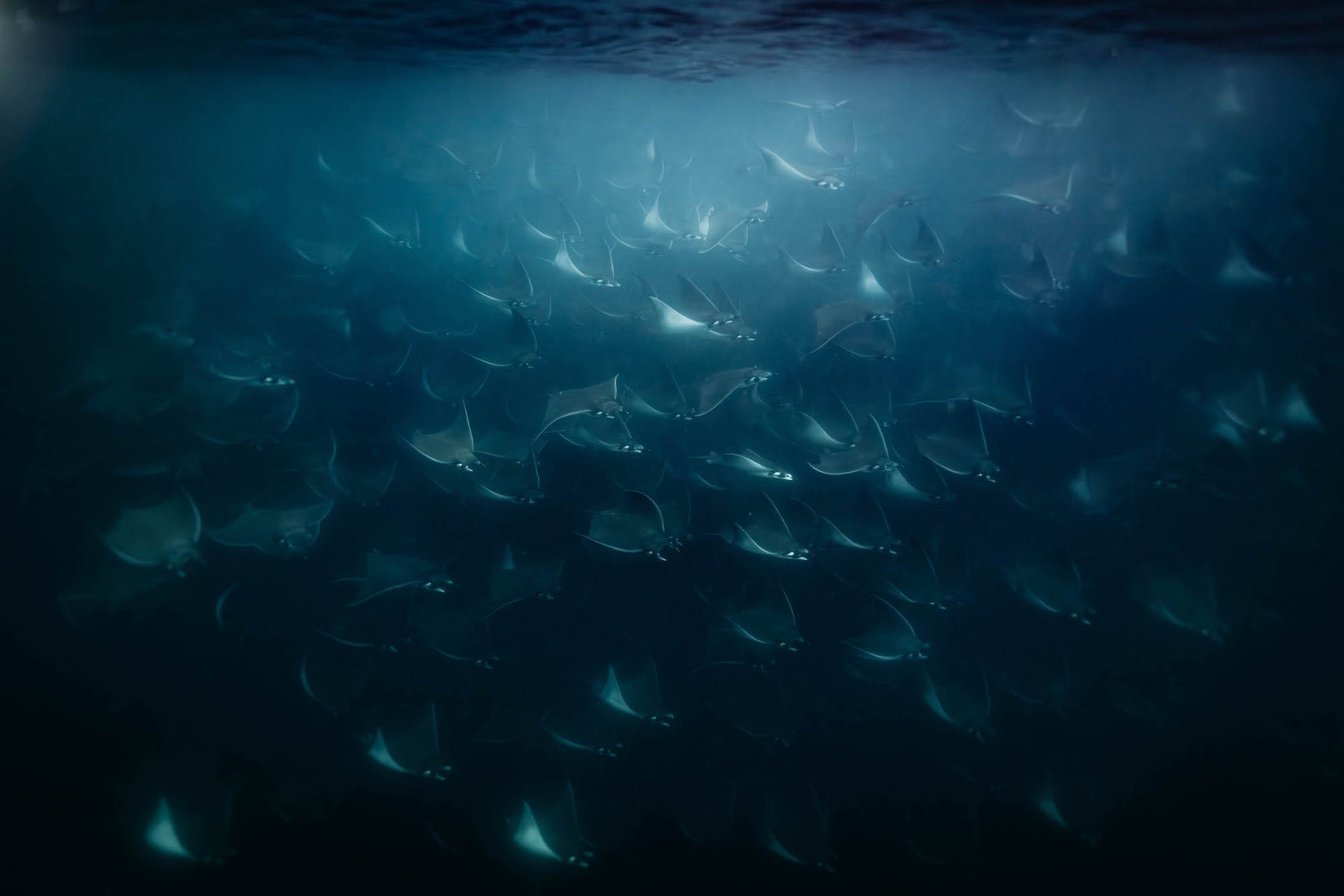Sarah Teng (@sarah.teng) is a travel and underwater photographer based in New York City. “I always grew up in close vicinity to cameras owned by my dad and my uncle, and have had a camera in my hands for as long as I can remember,” she explains. “I bought my first Sony camera in August 2021, which is the same Sony Alpha 7R III setup that I use today. I’ve been SCUBA certified since 2007 and as I began to travel more and take photography more seriously, I decided to merge my two favorite hobbies and invested in an Ikelite underwater housing for my Sony Alpha 7R III.” We saw these mesmerizing images she took in a sea of mobula rays and wanted to learn more. Keep reading as she shares the story in her own words.
Product Preview – In This Article You’ll Find:
–Sony Alpha 7R III
–Sony 24mm f/1.4 G Master
Ever since then, I’ve been obsessed with exploring and documenting the underwater world in an effort to make the activity more accessible. By doing so, I hope to encourage more people to explore and build unique experiences for themselves, because only when you experience it firsthand do you understand why our natural world is worth protecting. Whether it pertains to wildlife, landscapes, or lesser-known spaces — education and storytelling is one of the best ways to protect and preserve the animals and places we love the most.
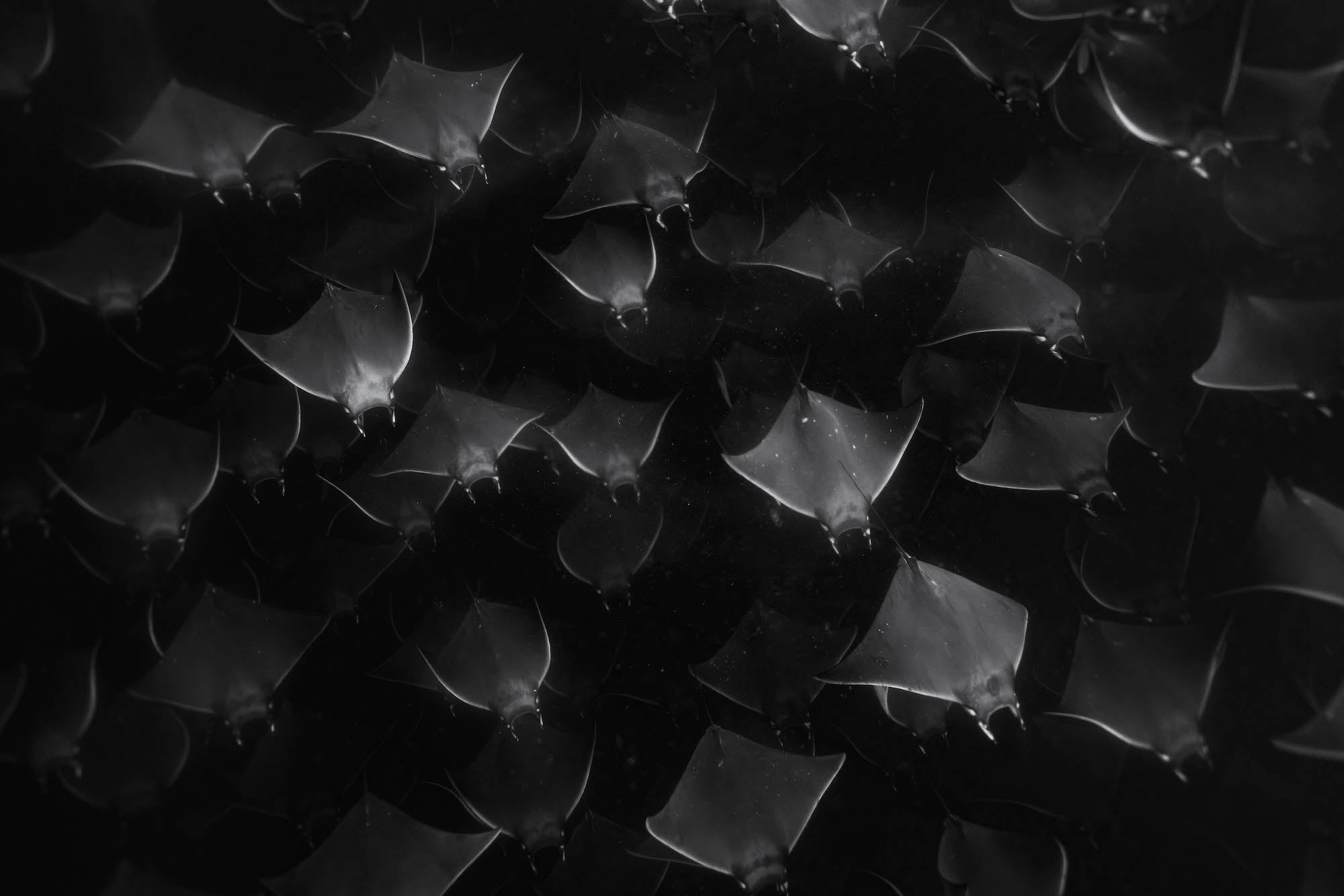
Photo by Sarah Teng. Sony Alpha 7R III. Sony 24mm f/1.4 G Master. 1/640-sec., f/1.4, ISO 250
Making The Most Of Less Than Ideal Conditions
I planned this trip to fill a free weekend while visiting my hometown of Austin, Texas. I have always wanted to visit Baja California because I’d heard about crazy wildlife encounters depending on the season, and sure enough, I’d be visiting during the mobula migration in June! Every year from April to August, the mobula rays migrate to feed and breed in the nutrient-rich waters of the Sea of Cortes. Even though it’s peak season in certain areas of the Baja California peninsula, I was worried I’d miss out because I’d be in Cabo San Lucas where the season is typically a few weeks later.
On this particular day, we took the boat out of the marina and the captain immediately saw where the mobulas were. On all expeditions for the past two days, the crew hadn’t seen any mobulas, so we were extremely lucky! These photos were from our very first encounter when we slid into the water that day. Our guide said to wait a few minutes, and sure enough we looked down in the water and almost immediately were surrounded by hundreds of mobula rays flying past us. We spent a few hours in the same general area and got to encounter at least 5-7 different fevers passing by. When we weren’t in the water, we watched the mobulas breach out of the water all around us — something they most likely do to show off and attract a mate.
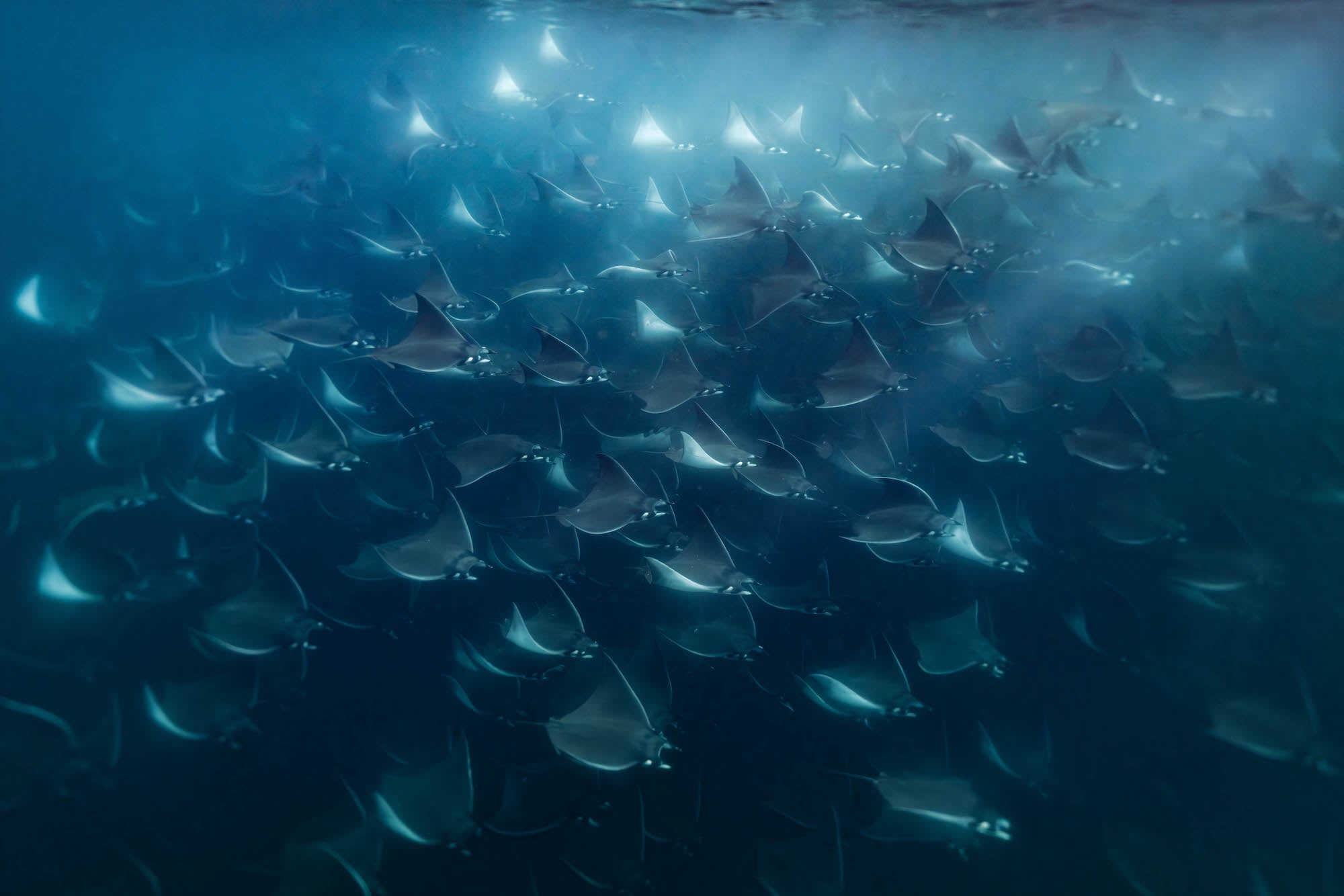
Photo by Sarah Teng. Sony Alpha 7R III. Sony 24mm f/1.4 G Master. 1/500-sec., f/1.4, ISO 250
I had a few specific shots in mind going into the trip, but the lighting conditions and water visibility were not ideal, so I just had to make the most of it with the encounters we got. Despite the number of rays we saw, mobula ray populations have been declining each year. It is so important and valuable to experience these species in the wild, under supervision of a dive shop dedicated to their research and protection. The best thing we can do is spread knowledge and awareness for wildlife like this; so that we can continue to marvel and enjoy them for generations to come.
A Wide Lens To Capture The Underwater Action
I shot these with my Sony Alpha 7R III and Sony 24mm f/1.4 G Master lens inside an Ikelite housing rated to a depth of 200ft. Of course, I wouldn’t need to go that deep in this case, but it’s always nice to have that reassurance when shooting underwater. I love the Alpha 7R III for the high-resolution sensor which gives me the flexibility to crop in a little if and when needed.
Wide lenses are typically best for shooting underwater so you can capture all of the action and compensate for the slight magnification of objects through the water itself. It was actually pretty overcast and dark on this day, and it's these situations where I especially love the f/1.4 aperture on my G Master lens for bringing in a ton of light when the water is murky and the sun is intermittently behind clouds. I’ve shot in similar dark conditions with the same setup before, and was always really happy with how sharp the photos came out, all thanks to the G Master! The black and white image was taken at 1/640-sec., and the rest were at 1/500-sec., and all were at f/1.4 and ISO 250. I had Continuous Shooting set to Mid and Continuous Auto-Focus with Expand Flexible Spot focus area.
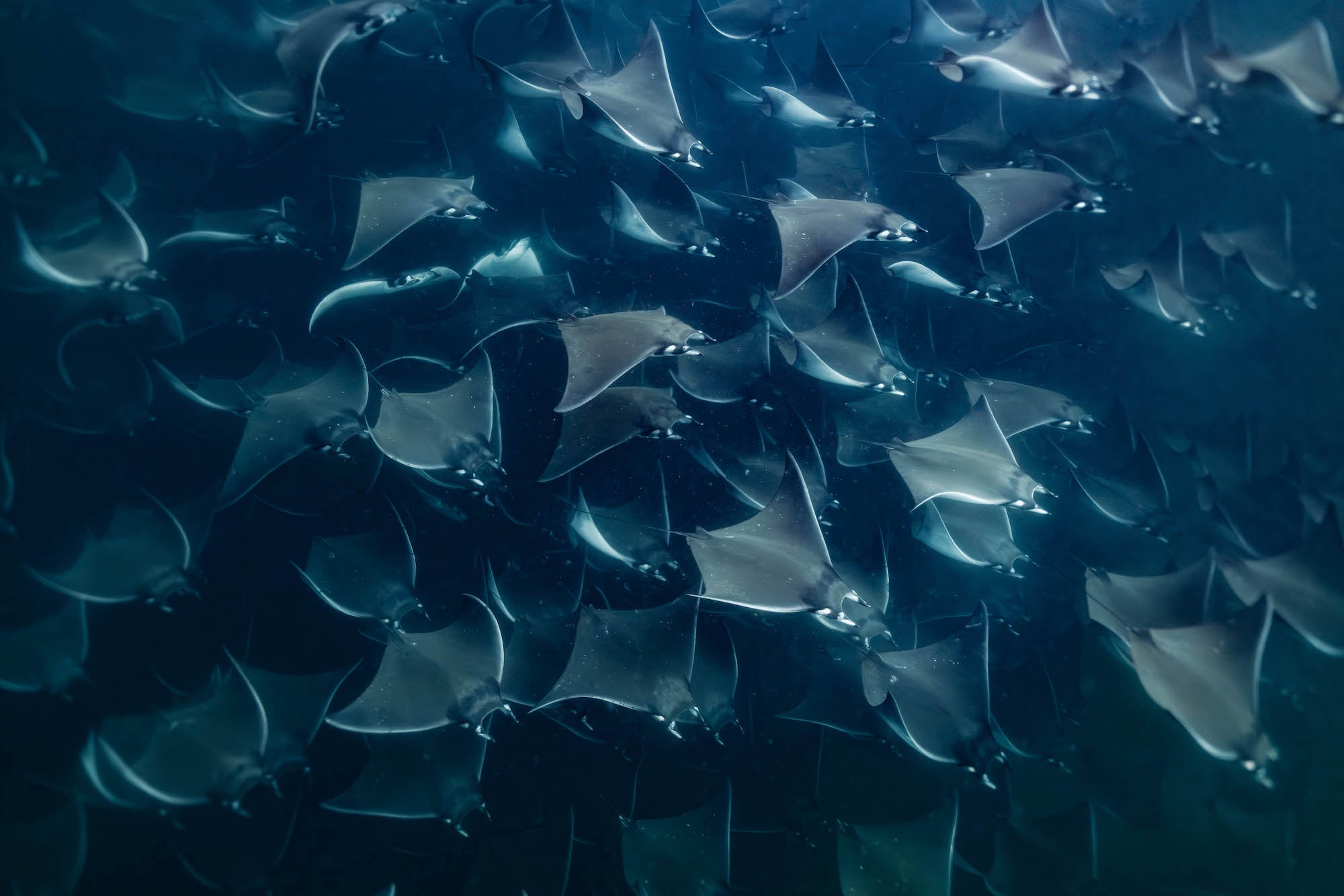
Photo by Sarah Teng. Sony Alpha 7R III. Sony 24mm f/1.4 G Master. 1/500-sec., f/1.4, ISO 250
These were all taken mostly at the surface or one meter/three feet underwater at most, because the mobulas will hang out near the surface and swim by without us affecting their behavior. They like to hang out near the surface to eat up all the plankton at the surface, and they prefer to go into deeper water when the sun is brightest so they can avoid predators. One of the reasons the Sea of Cortes is known as the “world’s aquarium” is also why the water visibility isn’t always so great — thousands of micro-organisms and plankton in the water enables hundreds of migratory species, like the mobula rays, to thrive and feed in its waters. So we have the plankton to thank for the wildlife, but also to blame for the murkiness.
The rules for diving with mobulas are much like the rules for diving with any other wildlife in the water: don’t chase, don’t appear threatening, and don’t splash. If the fever feels threatened or uncomfortable in any way due to our behavior, they’ll simply dive deep into the water and disappear, so it’s really important for us to respect their space to make them feel comfortable. This made my job easier, because all I had to do was get into the right position as the fever approached, and then float / gently swim alongside the fever as they flew by. If I was right on the edge of the fever, I could dive down just slightly below the surface and get eye-level with the rays for a more compelling shot. I’m sure my body position was pretty awkward and funny to see as I swam parallel with the fever while holding my camera perpendicular to my body in order to get the shot I had envisioned.
The Edit
I edited these and all of my photos in Adobe Lightroom Classic. They were a fun challenge to edit because, due to the murky water and lack of sun, the RAW photos came out a bit dark and green. I used a few techniques to get past this, but mostly focused on white balance, the color sliders, clarity, and dehaze. When it comes to underwater photos, colors are always finicky because they appear so differently underwater, so I always try to be cognizant of balancing out the blues and greens which can often be too overwhelming. Since RAW underwater photos also tend to be flat and one-dimensional, I also like to use masks to add dimension and contrast back into the photo. Something I’m especially grateful for is the AI denoise feature, which had actually been released recently when I took these photos. I was and am still blown away by how well it works to clean up plankton and tiny particles in the water!
See more of Sarah Teng’s work on Instagram @sarah.teng.
This isn't the first time Sony shooters have shown us the stunning spectacle of migrating mobula rays. Check out the video below where Sony Artisans Cristina Mittermeier and Paul Nicklen document the dancing mobula rays both above and below the water’s surface - and read more in Breaking The Surface: SeaLegacy Gets Mobula Ray Fever In The Sea Of Cortez.


